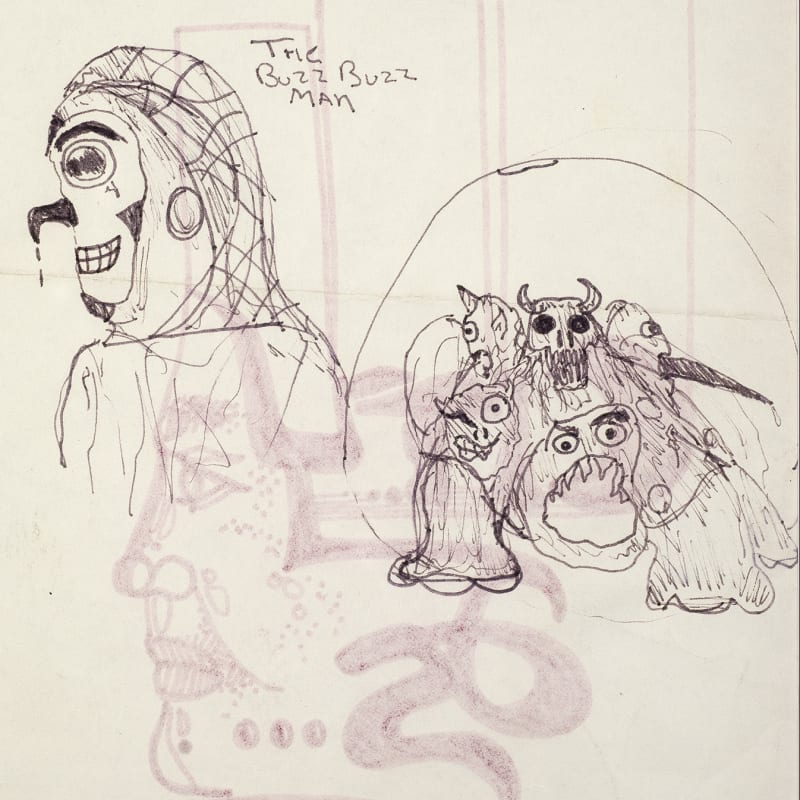There are three figures on one side of the sketch. The first is a man in sunglasses staring at a cactus. There is little detail and no perspective. The man, the cactus, and tumbleweed that is lying between them are cartoonish and reminiscent of Basquiat's earliest style of paintings like Cadillac Moon, 1981. The second figure, the largest of the three is a reference to the African and Haitian art Basquiat was exposed to in his museum jaunting youth. A beak like nose protrudes from dark spaces for eyes. Here Basquiat begins his journey into melting animal and human in body and spirit.
It is the third figure where we witness the emergence - PERHAPS FOR THE FIRST TIME- of the human form that would propel Basquiat to the top of 1980's art world. How does this small figure on a sketch by a young, charismatic yet unknown artist in his teens morph into a painting of world-renowned importance? This is the evolution of an artist. This is a concept hatched yet buried in a space in the imagination where something is created and stored only to re-emerge in its full-blown manifestation some five years later.
There are the disembodied parts that stem from the spookish monster, and the horns protruding from a skull head that not only blends animal and human, but life and death in simultaneous existence. Finally there is the wide open mouth and stick lines for teeth. These together are an early representation of the signature form that would show itself in Basquiat's paintings time and time again. The skull head, in particular, would assert itself clearly in his Untitled, 1982, a painting so dynamic that in 2016 it became -until this past year- Basquiat's highest-selling work at 57 million.
On the other side of the sketch in red marker, there is an incarnation of a tag Basquiat created for City as School, the alternative educational program he attended. A cookie cutter city skyline bleeds into graffiti style text then further morphs into a side view of face that holds little detail. It is a face that can be found on other sketches of Basquiat’s dating from his teenage years. The words "City as..." is followed by a curious ellipsis. While these three dots imply “school” finishing the name, they also leave the possibilities of what the city “as” can be.
New York City in the 1970’s was Basquiat’s playground and an overflow of grit, grime and barely managed chaos. Basquiat felt it was his duty to add to the mayhem, as he and Al Diaz formed SAMO and stamped their creative mark with colorful spray paint and publically displayed dialogue.
Basquiat’sindividual early subject matter was typically limited to objects such as automobiles, buildings, and debris, however in “The Buzz Buzz Man” Basquiat began to explore his unique concept of the human figure and we see why Basquiat would become one of the most influential painters of the twentieth century.
